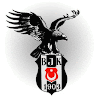Why the chevron, stars and gold are used to represent the Bank


•The square is an adaptation of a shield, used as a logo by the Bank during the 1950s and 1960s
•Up until the 1960s, a Kiwi used to perch above the shield on a tuft of grass
•The silver stars represent the Southern Cross on the New Zealand flag, although they do not have the touches of red that appear on the flag
•The five yellow discs are called bezants - gold coins used by the Byzantine in 9th century Europe. The Medicis, an infamous Italian banking family, used the same coins in their coat of arms, and various banks, such as the Bank of Scotland, still use them today
•The two gold lines forming an inverted V are called chevronels, or little chevrons. Their function is purely practical - they separate the bezants from the stars
•The original coat of arms from which this logo is derived, was granted to Bank of New Zealand in 1954. The original document, complete with three enormous red seals and gold paint, describes the coat of arms as "azure within two chevronels or five Bezants in chief three Mullets chevronwise and one in base Argent. And for the Crest on a Wreath of the Colours Standing on a Mount of Earth with Ferns property growing thereon a Kiwi "
•According to heraldic lore, a person or corporation cannot display arms without having such a grant. Strict guidelines on colour and arrangement of the symbols are followed, to ensure there are no duplicated coats of arms
Reference:http://www.bnz.co.nz/About_Us/1,1184,3-156-503,00.html













0 yorum:
Post a Comment